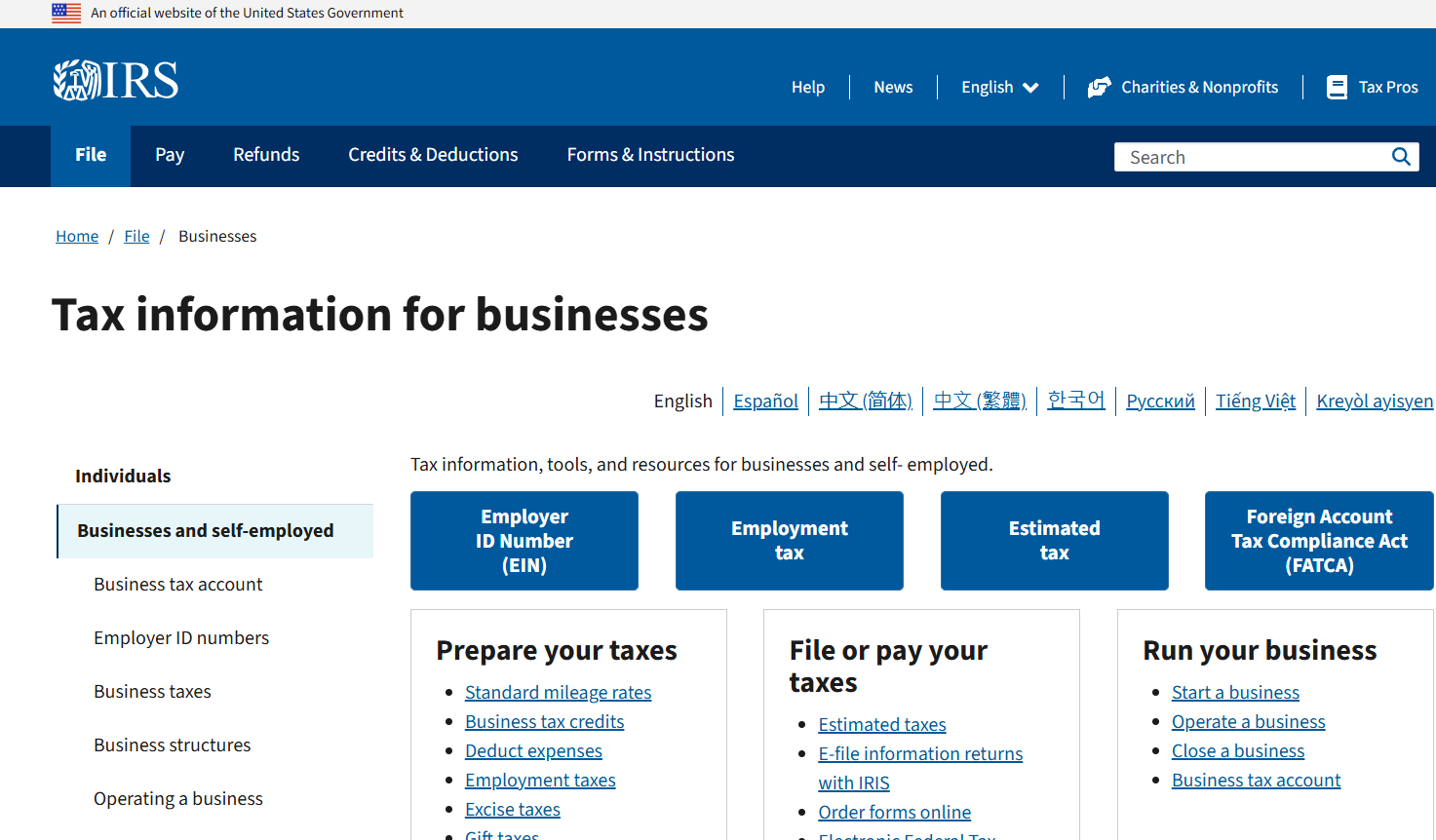2019 Year End Tax Ideas for Individuals
December 13, 2019

The following is an excerpt from the Dowell Group year-end newsletter, which covered a range of topics for businesses and individuals.
The following letter was prepared and distributed to clients and friends of Dowell Group, LLP. The letter discusses individual and business tax planning ideas that may be appropriate in certain situations. This does not represent tax advice, as every situation must be considered on its own merits.
2019 YEAR-END CHECKLISTS
Individuals – Year-End Tax Planning
- Flexible Spending Account – Consider where you stand for this year, and determine if you need to adjust the deductions for next year in your employer’s health flexible spending account (FSA).
- Health Savings Account – Make sure you have maximized contributions to your health savings account (HSA).
- 401(k) plans – check current amounts set aside and fully fund, if you are able, for 2019.
- Capital gains and losses – Determine the net short and long-term capital gains and losses recognized thus far; also consider any significant capital gain distributions you might receive from mutual funds or partnership investments, and take into account any capital loss carryovers. Once you understand the overall amounts of net gains and losses, strategize what action you may want to take by the end of this year. It may be appropriate to “harvest” capital losses in your account to offset gains (however, see discussion immediately following on “wash” sales). Long-term capital gain from sales of assets held for over one year is taxed at 0%, 15% or 20%, depending on the taxpayer’s taxable income. The 0% rate generally applies to the excess of long-term capital gain over any short-term capital loss to the extent that it, when added to regular taxable income, is not more than the “maximum zero rate amount” (e.g., $78,750 for a married couple). If the 0% rate applies to long-term capital gains you took earlier this year, there is no benefit to selling stocks at a loss, as there is no taxable gain to offset.
- “Wash” sales – You might have a stock or bond that shows a loss, but you want to continue to hold that security because you think the price will recover. That security can be sold and the loss recognized, as long as the security is not repurchased for 30 days; if purchased before 30 days, the sale is deemed to be a “wash” sale and the loss is disallowed.
- Make an estimate of this year’s tax liabilities – If your situation has been volatile this year, make a quick projection of your Federal and State income taxes to see if you have paid in an adequate amount of Federal and State income taxes. If you are short, you may be able to increase withholdings or bump up the estimated tax payments before year-end. If you look to be overpaid, you can reduce the final quarterly installments.
- Using a distribution from a retirement plan to pay a shortfall before year end – Take an eligible rollover distribution from a qualified retirement plan before the end of 2019 if you are facing a penalty for underpayment of estimated tax and having your employer increase your withholding is unavailable or won’t sufficiently address the problem. Income tax will be withheld from the distribution and will be applied toward the taxes owed for 2019. You can then timely roll over the gross amount of the distribution, i.e., the net amount you received plus the amount of withheld tax, to a traditional IRA. No part of the distribution will be includible in income for 2019, but the withheld tax will be applied pro rata over the full 2019 tax year to reduce previous underpayments of estimated tax.
- Postpone or accelerate income and deductions – Postpone income until 2020 and accelerate deductions into 2019 if doing so will enable you to claim larger deductions, credits, and other tax breaks for 2019 that are phased out over varying levels of adjusted gross income (AGI). These include deductible IRA contributions, child tax credits, higher education tax credits, and deductions for student loan interest. Postponing income also is desirable for those taxpayers who anticipate being in a lower tax bracket next year due to changed financial circumstances. Note, however, that in some cases, it may pay to actually accelerate income into 2019. For example, that may be the case where a person will have a more favorable filing status this year than next (for example, head of household versus individual filing status), or expects to be in a higher tax bracket next year.
- Defer a bonus – It may be advantageous to try to arrange with your employer to defer, until early 2020, a bonus that may be coming your way. This could cut as well as defer your tax.
- Charitable contributions – Consider making any additional charitable gifts by the end of the year. Gifts are only deductible if made to an organized 501(c)3 charity. Be sure to get a receipt from the charity as evidence of the timely gift.
- Charitable contributions of appreciated stock – Donating appreciated securities is an effective way of meeting the desire to support a charity while allowing the donor to deduct the full fair market value of the gift. The donor will not pay tax on the capital gain of those securities that were gifted.
- Non-cash charitable contributions – Consider making additional noncash charitable gifts by the end of the year, but pay particular attention to the substantiation rules if you are claiming that the fair market value of your gifts exceeded $250. Make a detailed dated list of the donated items and their condition, and affix the list to the receipt; it’s a good idea to take a picture of the goods as well.
- Prepay expenses – Consider using a credit card to prepay expenses that can generate deductions for this year (charitable, business, and medical expenses are good examples), even if you do not pay the credit card bill until 2020.
- State income taxes – If you expect to owe state and local income taxes when you file your return next year and fear you could incur a penalty for underpayment, consider asking your employer to increase withholding of state and local taxes (or pay estimated tax payments) before year-end. Be aware that doing so, however, could push your total state and local taxes paid over the $10,000 limit for the year.
- AMT – In many cases, AMT will not apply in situations where it has applied in the past for individuals, due to limits on the deductions for state and local taxes and the elimination of miscellaneous itemized deductions. If it does apply, estimate the effect of any year-end planning moves on the alternative minimum tax (AMT) for 2019.
- Itemized deductions and “bunching” deductions in one year – Many taxpayers who claimed itemized deductions will no longer be able to do so, due to the increase in the basic standard deduction (to $24,400 for joint filers, $12,200 for singles and married filing separately, and $18,350 for heads of household), and the elimination and restriction of some itemized deductions. The cap on deducting state and local income tax and real estate tax is set at no more than $10,000, and miscellaneous itemized deductions and unreimbursed employee expenses are no longer deductible. You can still itemize medical expenses to the extent they exceed 10% of your adjusted gross income, charitable contributions, and interest (also capped) on qualifying residence debt, but those deductions will not result in a benefit if they do not cumulatively exceed the new, higher standard deduction referenced above. Some taxpayers may be able to work around the new reality by applying a “bunching strategy” to pull or push discretionary medical expenses and charitable contributions into the year where they will do some tax good. For example, if a taxpayer knows he or she will be able to itemize deductions this year but not next year, the taxpayer will benefit by making two years’ worth of charitable contributions this year, instead of spreading out donations over 2019 and 2020.
- Roth conversion – If you believe a Roth IRA is better than a traditional IRA, consider converting traditional-IRA money invested in beaten-down stocks (or mutual funds) into a Roth IRA in 2019 if eligible to do so. Keep in mind, however, that such a conversion will increase your AGI for 2019, and possibly reduce tax breaks geared to AGI (or modified AGI).
- Required Minimum Distributions (RMDs) – RMDs must be taken from your IRA, 401(k) plan, or other employer-sponsored retirement plan if you have reached age 70-1/2. Failure to take a required withdrawal can result in a penalty of 50% of the amount of the RMD not withdrawn. If you turned age 70 ½ in 2019, you can delay the first required distribution to 2020, but if you do, you will have to take a double distribution in 2020 (the amount required for 2019 plus the amount required for 2020).
- Gifting RMD to charity – If you are age 70-½ or older by the end of 2019, have traditional IRAs, and particularly if you can’t itemize your deductions, consider making 2019 charitable donations via qualified charitable distributions from your IRAs. Such distributions are made directly to charities from your IRAs, and the amount of the contribution is neither included in your gross income nor deductible on Schedule A, Form 1040. But the amount of the qualified charitable distribution reduces the amount of your required minimum distribution, which can result in tax savings.
- Gifting RMD to charity in the future, if you think you will not be able to itemize – If you were younger than age 70-½ at the end of 2019, you anticipate that in the year that you turn 70-½ and/or in later years you will not itemize your deductions, contribute as much as you can to one or more traditional IRAs in 2019. Then, when you reach age 70-½, do the steps in the immediately preceding bullet point. Doing all of this will allow you to, in effect, convert nondeductible charitable contributions that you make in the year you turn 70-½ and later years, into deductible IRA contributions and reductions of gross income from age 70-½ and later year distributions from the IRAs.
- Gifts to family or friends – Make gifts sheltered by the annual gift tax exclusion before the end of the year. You can give $15,000 in 2019 to each of an unlimited number of individuals. You can also gift $30,000 to one person by using your spouse’s exclusion, but note that the IRS requires you to file a gift tax return in this situation.
- Education funding –If educational funding is an issue in your family, consider funding 529 plans by the end of the year.
- Marriage or divorced during the year – If you married or divorced in the current year, don’t be surprised by the income taxes. If you married during the year, no matter what date, you and your spouse will file either as married with a joint return or as married filing separately. In most cases, it is advantageous to file married joint. Your incomes and deductions will be combined, and that often leads to increased tax liabilities for the year, compared to when you were both single. If divorced during the year, you will file as single or head of household, and you will need to make sure you have paid adequate taxes. If you had a change in marital status, we suggest you call your tax professional.
- Dispose of passive activities – The owner of a business should consider disposing of a passive activity in 2019 if doing so will allow the owner to deduct suspended passive activity losses.
- Increase basis –The owner of an interest in a partnership or an S corporation may need to increase the basis in the entity so that the owner can deduct a loss from it for 2019.
Individuals – Other Considerations at Year-End
- Review your portfolio – The end of the year is a perfect time to analyze your holdings and determine if the risk tolerances and asset allocations are still appropriate for your investment objectives. Consider your age, health, and family issues.
- Review the beneficiary designations – Review the beneficiaries named on retirement accounts or insurance policies; consider if assets are titled correctly; determine if a family member should be added as a signer on an account.
- Wills and Trusts –If you have not set up wills and trusts, then contact your attorney; call us if you need a reference. If it has been many years since you had your wills and trusts drafted, set up a meeting with your attorney or CPA to review the documents, including the named beneficiaries, guardians, and executors.
- Estate planning – For decedents dying from 2019 to 2025, the TCJA increased the amount that is exempt from Federal estate taxes. The exempt amount in 2019 is $11.4 million per individual, and $22.8 million per married couple. States, in some cases, may have lower thresholds for the amounts that are subject to state inheritance taxes.
- Grantor (“Living”) trusts – If you have substantial assets, you should consider creating a grantor (also known as living or revocable) trust. If you have a grantor trust, be sure that all assets are held in that trust; brokerage accounts should be titled in the name of the trust.
- Power of Attorney – As part of the review of wills and trusts, also consider powers-of-attorney and health care powers-of-attorney you have in force (or should have in force) for all of your family members.
- Insurance – Review the various types of insurance coverages you have in place and re-examine your needs. This includes homeowner’s, auto, life, health, disability, umbrella liability, and long-term care.
- Family meeting – Consider having a family meeting to give an overview of your investments and objectives, charitable giving strategies and desires, the location of key documents, and names of your key advisors (CPAs, attorneys, bankers, insurance agents, investment advisors, etc.).
- Safe deposit box –Make a special point to visit your safe deposit box and inventory (and organize) the contents. Make sure your executor, spouse, or other key person knows where the key is kept.

As you may be aware, you can't keep retirement funds in your account indefinitely. You generally have to start taking withdrawals from your IRA, SIMPLE IRA, SEP IRA, or 401(k) plan when you reach age 73. Roth IRAs do not require withdrawals until after the death of the owner. Your required minimum distribution (RMD) is the minimum amount you must withdraw from your account each year. You can withdraw more than the minimum required amount. Your withdrawals will be included in your taxable income except for any part that was taxed before (your basis) or that can be received tax-free (such as qualified distributions from designated Roth accounts). We typically instruct our clients to turn to their investment advisors to determine if they are required to take an RMD and to calculate the amount of the RMD for the year. Most investment advisors and plan custodians will provide those services free of charge, and will also send reminders to their clients each year to take the RMD before the deadlines. That said, it is still good to have a general understanding of the RMD rules. The RMD rules are complicated, so we have put together the following summary that we hope you will find helpful: When do I take my first RMD (the required beginning date)? For an IRA, you must take your first RMD by April 1 of the year following the year in which you turn 73, regardless of whether you're still employed. For a 401(k) plan, you must take your first RMD by April 1 of the year following the later of the year you turn 73, or the year you retire (if allowed by your plan). If you are a 5% owner, you must start RMDs by April 1 of the year following the year you turn 73. What is the deadline for taking subsequent RMDs after the first RMD? After the first RMD, you must take subsequent RMDs by December 31 of each year beginning with the calendar year containing your required beginning date. How do I calculate my RMD? The RMD for any year is the account balance as of the end of the immediately preceding calendar year divided by a distribution period from the IRS's "Uniform Lifetime Table." A separate table is used if the sole beneficiary is the owner's spouse who is ten or more years younger than the owner. How should I take my RMDs if I have multiple accounts? If you have more than one IRA, you must calculate the RMD for each IRA separately each year. However, you may aggregate your RMD amounts for all of your IRAs and withdraw the total from one IRA or a portion from each of your IRAs. You do not have to take a separate RMD from each IRA. If you have more than one 401(k) plan, you must calculate and satisfy your RMDs separately for each plan and withdraw that amount from that plan. May I withdraw more than the RMD? Yes, you can always withdraw more than the RMD, but you can't apply excess withdrawals toward future years' RMDs. May I take more than one withdrawal in a year to meet my RMD? You may withdraw your annual RMD in any number of distributions throughout the year, as long as you withdraw the total annual minimum amount by December 31 (or April 1 if it is for your first RMD). May I satisfy my RMD obligation by making qualified charitable distributions? You may satisfy your RMD obligation by having the trustee make qualified charitable distribution of up to $108,000 in 2025 ($105,000 in 2024) to a public charity (some public charities excepted). The amount of the qualified charitable distribution will not be included in your income. You may also make a one-time election to make qualified charitable distributions to certain charitable trusts or a charitable gift annuity. What happens if I don't take the RMD? If the distributions to you in any year are less than the RMD for that year, you are subject to an additional tax equal to 25% of the undistributed RMD (reduced to 10% if corrected during a specified time frame).









